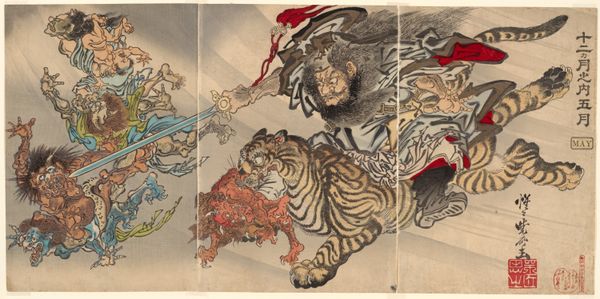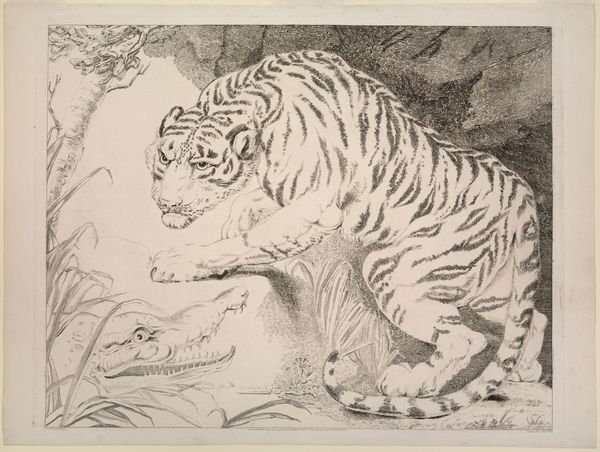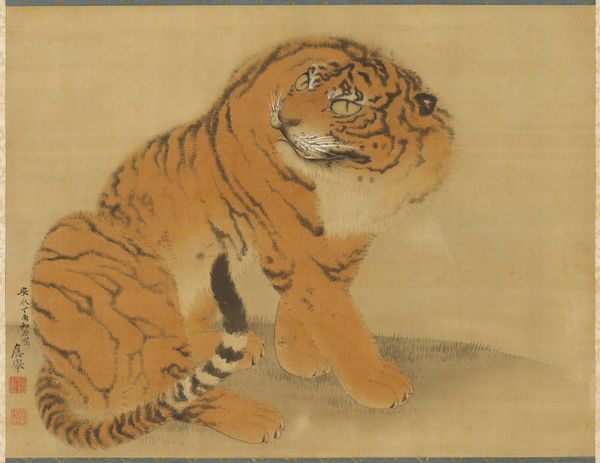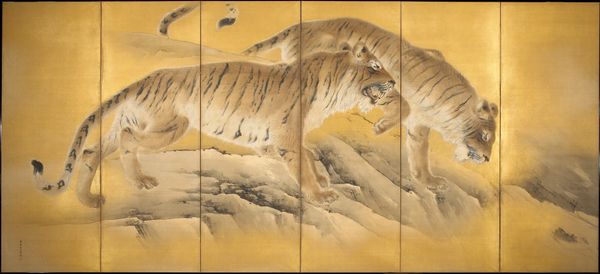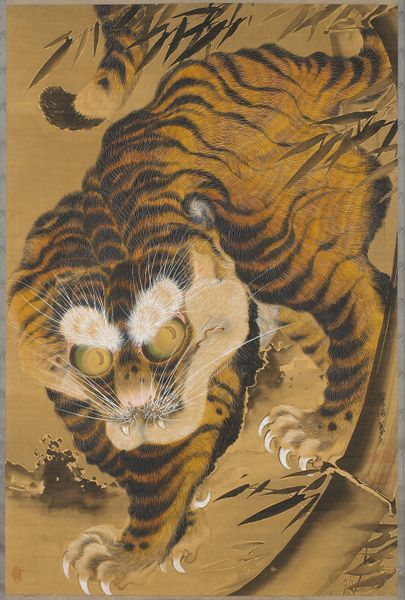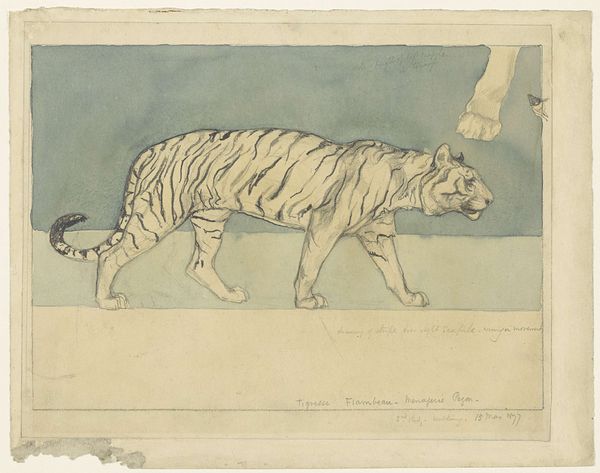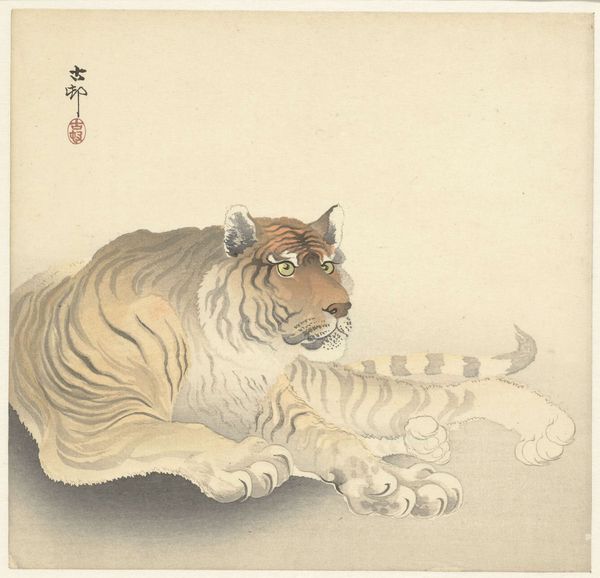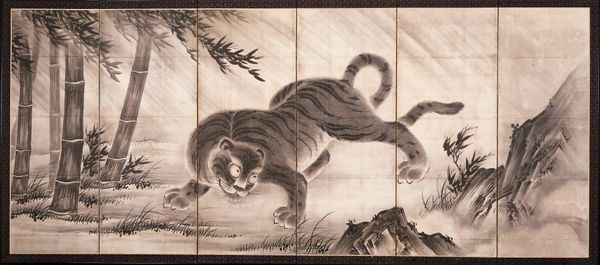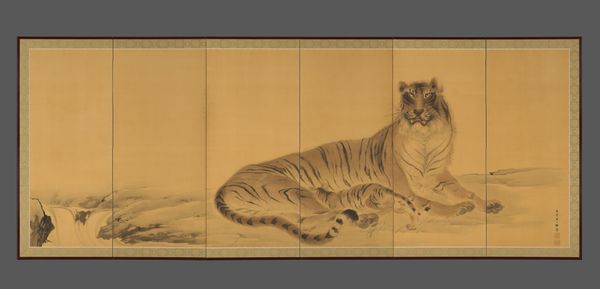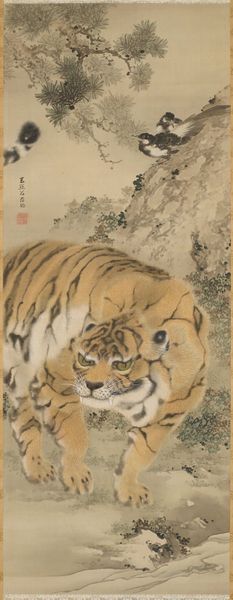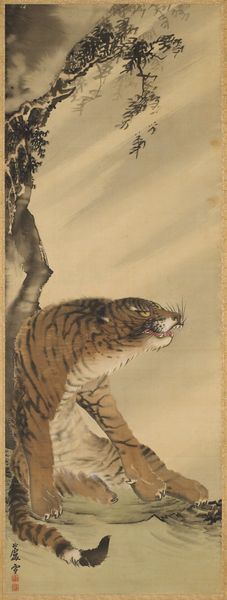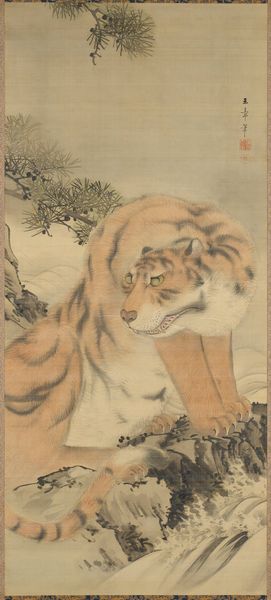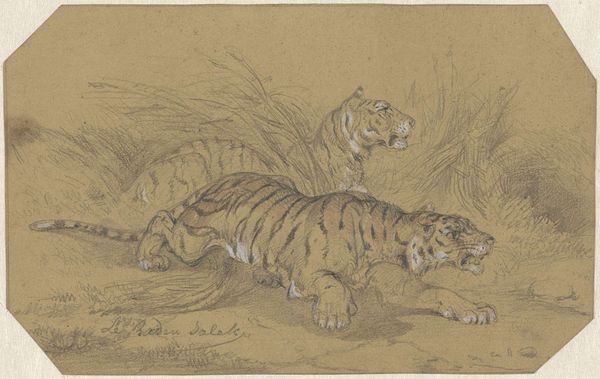
painting, impasto
#
painting
#
asian-art
#
landscape
#
figuration
#
impasto
#
realism
Dimensions: height 386 mm, width 737 mm
Copyright: Rijks Museum: Open Domain
Mishima Shôsô made this painting, Tigers and Soldiers, using ink and colour on paper. At first glance, the image appears to be a straightforward depiction of tigers in their natural habitat, but, in Japan, the tiger has historically stood as a symbol of courage and military prowess. The tiger became especially prominent in Japanese art and culture during the Edo and Meiji periods, a time of significant social and political upheaval. The Meiji Restoration marked a period of rapid modernization and westernization. During this time, traditional Japanese values were often re-evaluated and re-asserted, in response to a more westernized culture. We can see how this painting reflects a sense of national identity and martial spirit, and the artist may have been consciously positioning his work within this cultural and political landscape. For art historians, the image prompts us to ask what kind of cultural function the painting served, what political messages it conveyed, and what kind of audiences it was intended for.
Comments
No comments
Be the first to comment and join the conversation on the ultimate creative platform.
